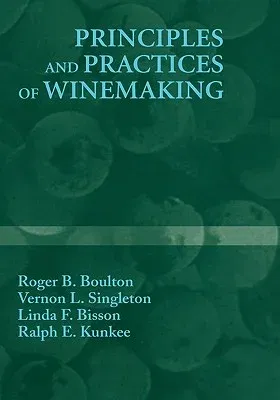Historically, scientific and educational books from studies within
California, the concepts can be classified into three categories: those
developed will be generally useful to enolo- providing concepts and
principles, those of- gists throughout the world. fering gathered
information, and those pre- Although this volume covers the basic prac-
senting opinion or perspective (which mayor tices and their rationale
for successful wine may not be instructive). production, wines and wine
regions of the While there are many wine-related books of world and
details of specialty wine production the third kind and some of the
second, there (such as vermouths, fruit wines, etc. ) are omit- are few
of the first, and this book attempts to ted as separate topics, although
incorporated fill that void. Of course, some aspects of cate- as
appropriate in general explanations. The gories two and three inevitably
remain. emphasis upon commercial scale by no means Because our teaching
program at Davis has precludes use of the material by small-volume
always been based on the interdisciplinary ap- winemakers, for whom the
principles of wine- proach to enology, we have pooled our expe- making
are equally valid, although practices rience to provide a volume that
provides the may need to be adjusted for the scale. Commer- benefits of
such interaction and discussion cial scale implies the consideration of
eco- rather than the more usual self-styled expert nomics and sensible
expenditure of effort and approach to such books.

